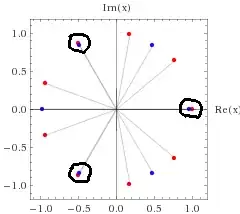Let $a,b \in \mathbb{N}$, and $X^a - 1, X^b - 1 \in K[X]$. Then $(X^a -1, X^b - 1) = X^{(a,b)}-1$, where $ (\alpha,\beta)$ is the GCD of $\alpha$ and $\beta$.
I have an intuitive understanding of this when $K=\mathbb{C}$, given that the roots of $X^a-1$ form a regular polygon around $(0, 0)$ and the GCD's roots would be the "overlapping" points of the two polygons (see below), but I have no idea where to begin proving this for any $K$.
Below are plotted the complex roots of $X^9 - 1$ (red) and $X^6-1$ (blue). There are three overlapping points, and $(X^9-1, X^6-1) = X^3-1$.

I'd appreciate any hints for proving this.